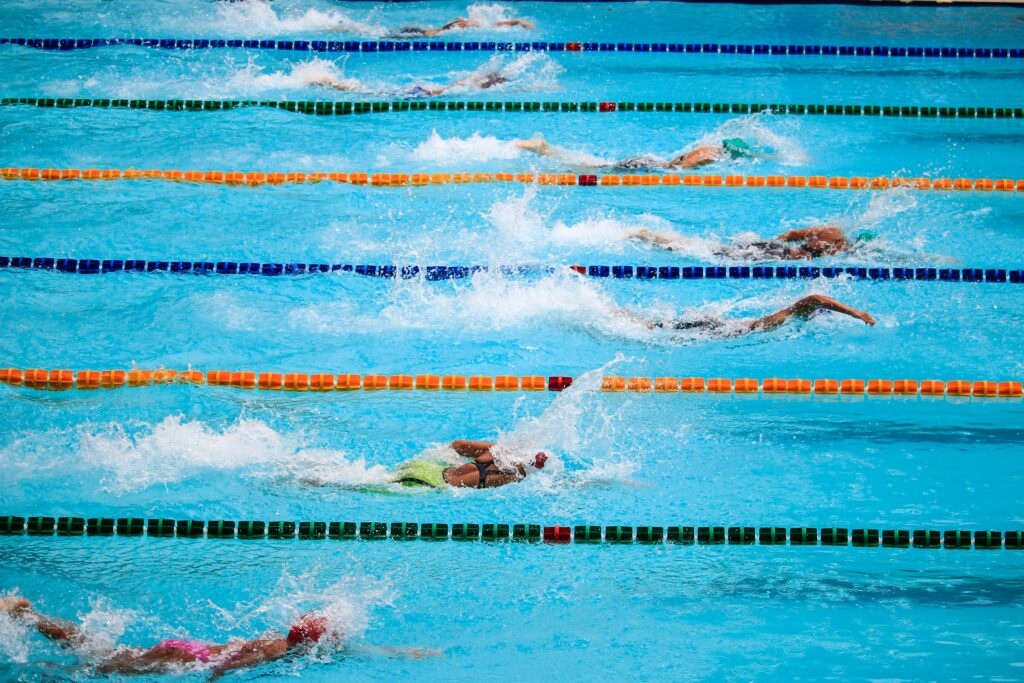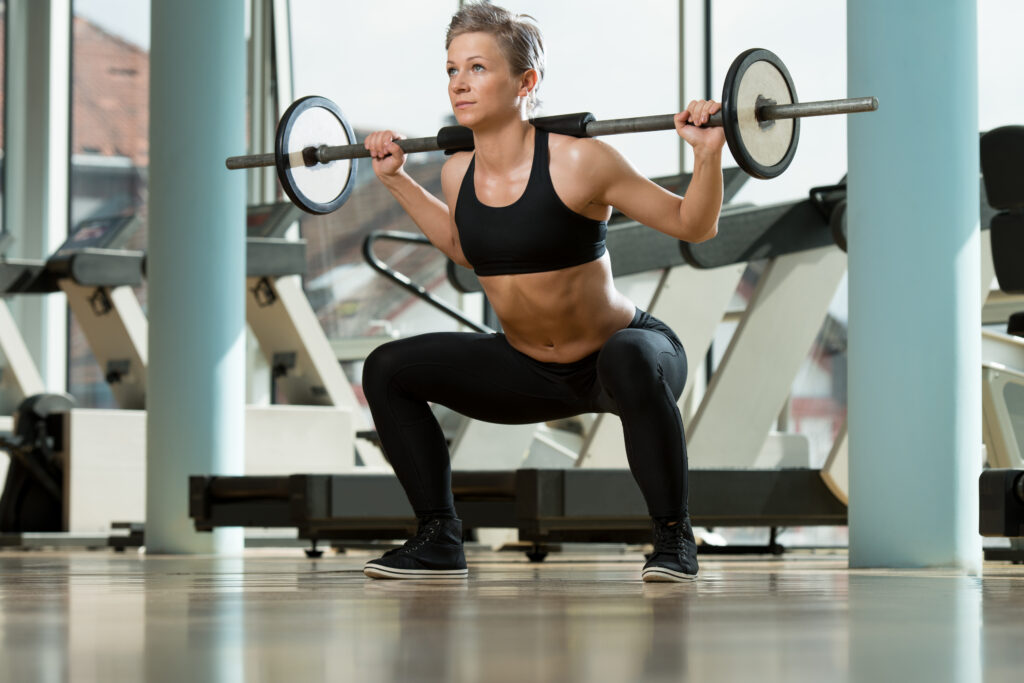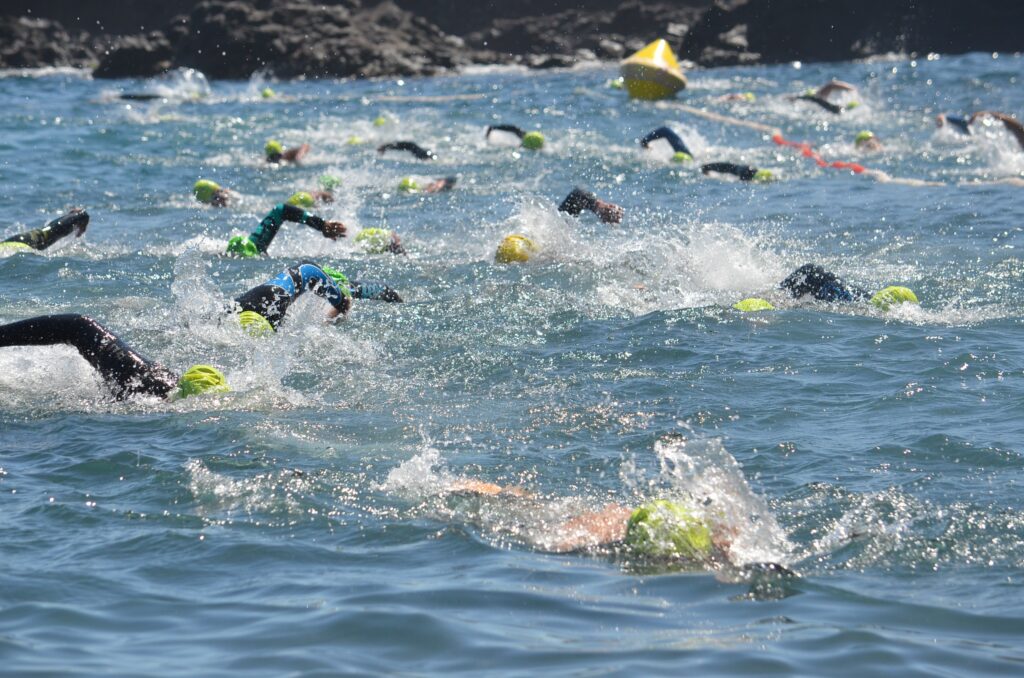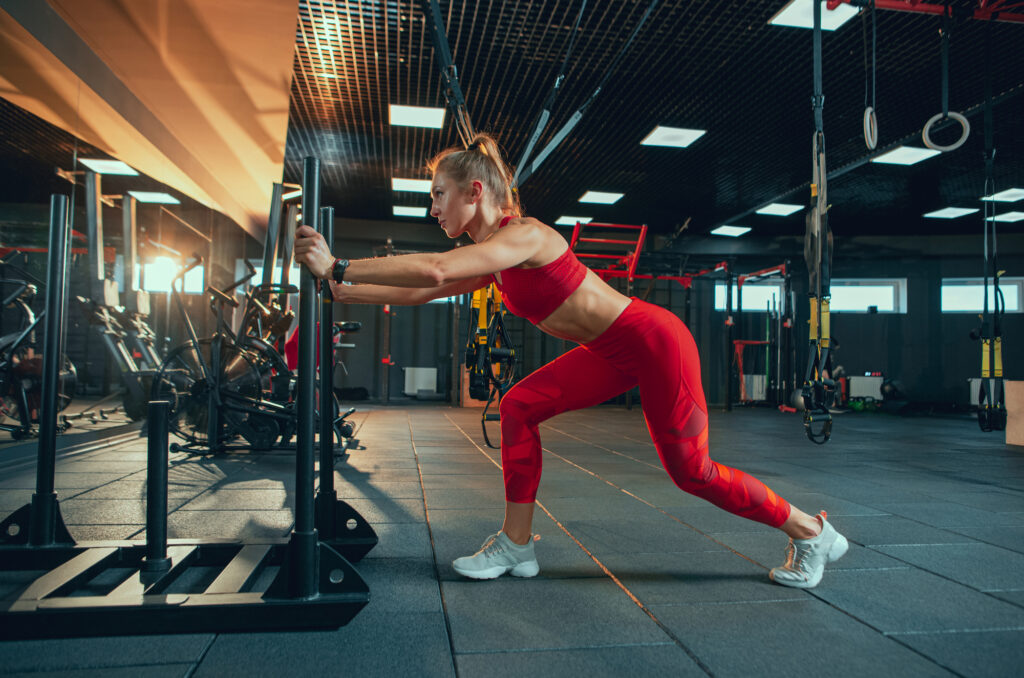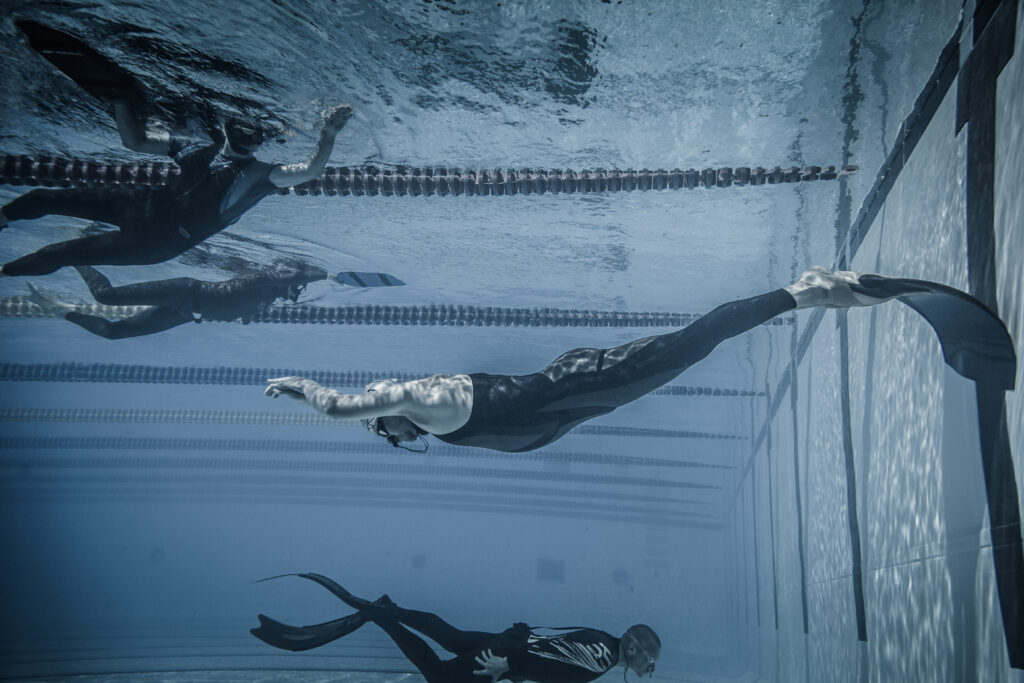The butterfly kick is a key technique in swimming that requires the use of several muscle groups to propel the swimmer through the water. To improve the butterfly kick, it is important to target and strengthen the muscles that are involved in the movement. By doing so, swimmers can achieve greater power and efficiency in their swimming, resulting in faster times and improved performance.
Understanding the butterfly kick is essential for targeting the right muscles during training. The kick involves a wave-like motion of the legs that begins with the downbeat, where the feet are pushed down towards the bottom of the pool, followed by the upbeat, where the feet are brought back up towards the surface. This movement requires a combination of strength and coordination in the legs, as well as engagement of the core and upper body muscles to maintain balance and stability in the water.
Key Takeaways
- To improve the butterfly kick, it is important to target and strengthen the muscles involved in the movement.
- Understanding the technique of the butterfly kick is essential for effective training.
- A combination of exercises, warm-up and conditioning, coaching, and nutrition can help swimmers improve their butterfly kick and overall performance.
Understanding the Butterfly Kick
The butterfly kick is an essential component of the butterfly stroke and is responsible for generating the majority of the propulsion in the water. It is a complex movement that requires a combination of strength, flexibility, and coordination. Understanding the mechanics of the butterfly kick can help swimmers improve their form and swim more efficiently.
The butterfly kick involves a simultaneous movement of both legs, with a pronounced knee bend and a strong undulation of the hips. The legs move in a dolphin-like motion, with the feet and ankles relaxed and the toes pointed. The upbeat of the kick comes from the undulation of the hips, while the downbeat is initiated by the flexion of the knees.
To perform the butterfly kick correctly, swimmers must maintain a consistent stroke rhythm and form. The kick should be synchronized with the arm stroke, with the legs kicking down as the arms enter the water and kicking up as the arms exit the water. Swimmers should also focus on keeping their hips and shoulders in line, with their head facing down towards the bottom of the pool.
Improving the butterfly kick requires a combination of strength and flexibility training. Swimmers should focus on developing the muscles in their legs, hips, and core, as well as increasing their range of motion and flexibility. Specific exercises that can help improve the butterfly kick include:
- Squats and lunges to strengthen the leg muscles
- Hip flexor stretches to improve hip flexibility
- Dolphin kick drills to practice the undulating motion of the hips
- Butterfly kick drills with a kickboard or fins to improve kick technique and endurance
By understanding the mechanics of the butterfly kick and incorporating specific exercises into their training regimen, swimmers can improve their form and swim more efficiently.
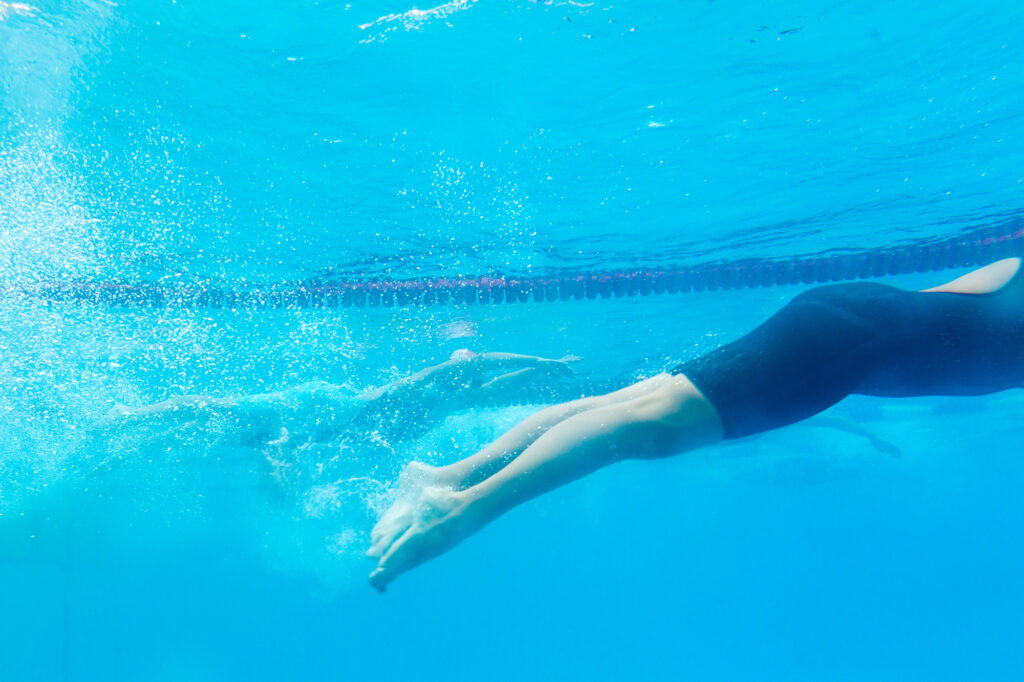
Muscles Involved in the Butterfly Kick
The butterfly kick is a powerful swimming technique that requires a lot of strength and coordination. It engages several muscle groups in the body, including the hips, core, shoulders, lower back, quads, glutes, obliques, hip flexors, hamstrings, quadriceps, ankles, upper body, rectus abdominis, transverse abdominis, thighs, biceps, rectus femoris, iliopsoas, and lats.
The primary muscles involved in the butterfly kick are the hip flexors, which help to initiate the downbeat and maximise propulsion during the leg kick. The hamstrings also play an important role in the recovery of the legs and maximising propulsion during the leg kick. The thigh muscles, specifically the quadriceps, are also engaged during the kick.
The glutes and hip flexors are crucial in the upward motion of the legs, while the downward motion is powered by the hip flexors. The ankles should be relaxed, and toes pointed to ensure maximum propulsion.
To improve the butterfly kick, it is essential to strengthen the core muscles, including the rectus abdominis, transverse abdominis, and obliques. These muscles help to stabilise the body and maintain proper form during the kick.
The shoulders and upper body also play a critical role in the butterfly kick. The lats are engaged during the arm stroke, while the biceps help to pull the arms back towards the body.
It is important to note that the butterfly kick is a full-body workout that requires strength, coordination, and endurance. Incorporating dryland exercises like squats, lunges, and core workouts can help to improve the strength and power of the muscles involved in the butterfly kick.
Importance of Warm-Up and Conditioning
Before starting any workout, it is essential to warm up properly to prepare the body for the upcoming physical activity. This is especially important for exercises that require a lot of strength and endurance, such as the butterfly kick. A good warm-up routine helps to increase blood flow to the muscles, which improves flexibility and reduces the risk of injury.
In addition to warming up, conditioning exercises can also be beneficial for improving the butterfly kick. Conditioning exercises help to increase strength and endurance, which are both essential for performing the butterfly kick effectively. Strength training exercises such as squats, lunges, and leg presses can help to build the muscles required for the kick.
Endurance training exercises such as running, cycling, and swimming can help to improve cardiovascular fitness, which is also important for performing the butterfly kick. A strong cardiovascular system can help to improve endurance and reduce fatigue during the kick.
It is important to note that conditioning exercises should be done in addition to, not instead of, the butterfly kick itself. While conditioning exercises can help to improve strength and endurance, they cannot replace the technique and skill required to perform the kick correctly.
In summary, warming up properly and incorporating conditioning exercises into a training routine can be beneficial for improving the butterfly kick. These exercises can help to increase flexibility, strength, endurance, and reduce the risk of injury.
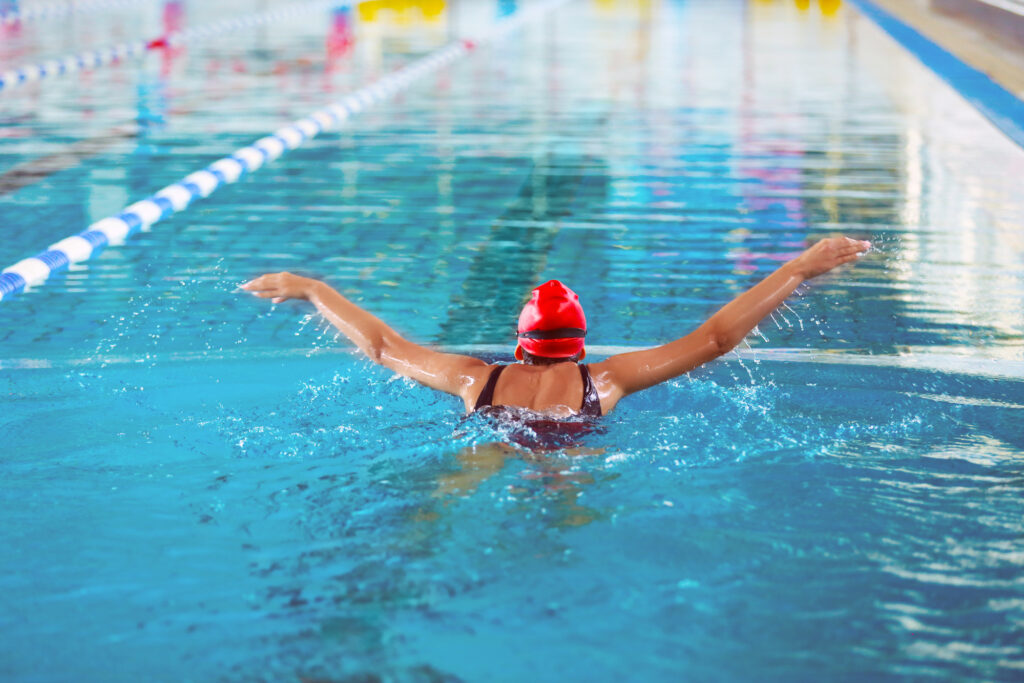
Techniques to Improve Butterfly Kick
Improving the butterfly kick requires a combination of proper technique, strength, and flexibility. Here are some techniques that can help improve the butterfly kick:
Flutter Kicks
Flutter kicks are an excellent exercise to strengthen the muscles used in the butterfly kick. To perform flutter kicks, lie on your back and lift your legs off the ground. Keep your legs straight and kick up and down in a rapid, fluttering motion. Try to keep your legs as close together as possible.
Body Position
Body position is crucial to a strong butterfly kick. The swimmer should keep their head down and their hips up, with their shoulders just breaking the surface of the water. This will create less drag and allow the swimmer to maintain proper body position throughout the stroke.
Propulsion
The butterfly kick generates a significant amount of propulsion, which is why it is essential to focus on the technique. The swimmer should focus on undulating their hips and maintaining a small bend in their knees. The power of the kick comes from the core and hips, not the legs.
Timing and Rhythm
Timing and rhythm are critical to a strong butterfly kick. The swimmer should focus on initiating the kick with their hips and undulating their body in a wave-like motion. The kick should be timed with the arm stroke, with the legs kicking as the arms pull through the water.
Efficiency
Efficiency is key to a strong butterfly kick. The swimmer should focus on maintaining a small range of motion in their legs and hips, with the emphasis on undulating the hips to generate power. It is also important to maintain a steady rhythm and avoid wasting energy by kicking too hard or too fast.
Flow Drill
The flow drill is an excellent exercise to help improve the butterfly kick’s rhythm and timing. The swimmer should focus on maintaining a steady, rhythmic motion, with the arms and legs working together in a coordinated motion.
Technique Tips
Proper technique is crucial to a strong butterfly kick. The swimmer should focus on keeping their head down, their hips up, and their body in a wave-like motion. The kick should be initiated with the hips, with the legs following in a small, undulating motion.
Improving the butterfly kick requires a combination of proper technique, strength, and flexibility. By incorporating these techniques into their training regimen, swimmers can improve their butterfly kick and become more efficient in the water.
Role of Breathing in Butterfly Kick
Breathing in butterfly kick is a crucial aspect that can affect the swimmer’s performance. The butterfly kick requires a lot of energy, and proper breathing can help the swimmer maintain their energy levels throughout the swim.
The breathing pattern in butterfly kick is rapid and explosive and can take place every stroke or every second stroke, depending on the swimmer’s ability and the distance and pace of the swim. Inhalation and exhalation occur quickly during the stroke cycle, and therefore, powerful respiratory muscles and reasonable breathing control are required.
Lateral breathing is an alternative to the traditional downward and forward-facing breathing in butterfly. Lateral breathing allows the head to be held closer to the water, and less effort is required to lift the head, shoulders and torso above the water. This can help the swimmer maintain their energy levels and improve their overall performance.
During the single arm strokes, the swimmer can breathe to the front or to the side, whichever is most comfortable. It is important to keep kicking consistently throughout each stroke cycle, even during the breathing phase.
To improve breathing control and respiratory muscles, the swimmer can practise breathing exercises and techniques outside of the pool. This can include diaphragmatic breathing, pursed-lip breathing, and deep breathing exercises. These exercises can help the swimmer maintain proper breathing control and improve their overall performance in the water.
In conclusion, proper breathing control and respiratory muscles are essential for a strong butterfly kick. The swimmer should practice breathing techniques and exercises to improve their breathing control and maintain their energy levels throughout the swim.
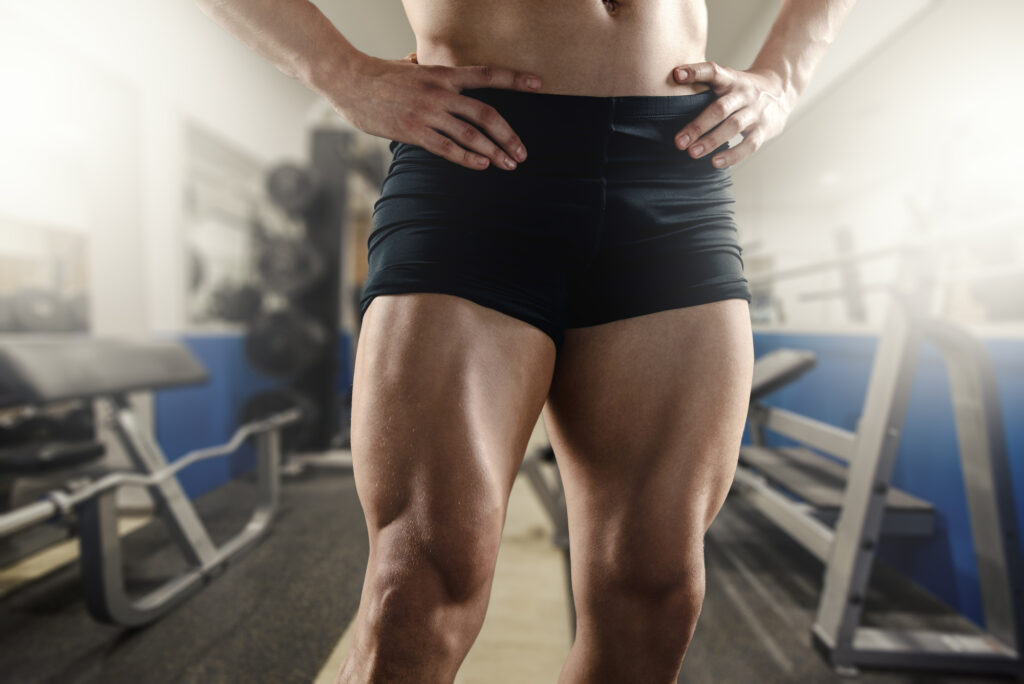
Exercises for Strengthening Key Muscles
Butterfly kick is a powerful swimming technique that requires strong core, back, and leg muscles. To improve the butterfly kick, it is important to focus on exercises that target these key muscle groups.
One effective exercise for strengthening the back muscles is the superman exercise. To perform this exercise, lie face down on a mat with your arms and legs extended. Lift your arms, chest, and legs off the ground simultaneously and hold for a few seconds before lowering back down. Repeat for several sets.
Squats are a great bodyweight exercise that can help strengthen the leg muscles. To perform a squat, stand with your feet shoulder-width apart and lower your body as if you are sitting in a chair. Keep your back straight and your knees aligned with your toes. Push back up to the starting position and repeat for several sets.
Variations of squats, such as jump squats or single-leg squats, can also be effective for targeting specific leg muscles.
Bodyweight exercises, such as push-ups and pull-ups, can help strengthen the core and back muscles. To perform a push-up, start in a plank position with your hands shoulder-width apart. Lower your body until your chest touches the ground, then push back up to the starting position. Repeat for several sets.
Pull-ups can be performed on a pull-up bar or using a resistance band. Grip the bar or band with your palms facing away from you and pull your body up until your chin is above the bar. Lower back down and repeat for several sets.
Overall, incorporating exercises that target the core, back, and leg muscles can help improve the butterfly kick and enhance overall swimming performance.
Role of Coaching and Technology
Coaching plays a vital role in improving butterfly kick technique. A coach can provide swimmers with feedback on their form and technique, helping them to identify areas for improvement. They can also provide guidance on how to properly engage the muscles used during the butterfly kick. By working with a coach, swimmers can develop a more effective and efficient kick, which can lead to faster times in the pool.
Another tool that can be useful for improving butterfly kick technique is technology. The MySwimPro app, for example, offers a variety of features that can help swimmers to improve their technique. The app includes a library of drills and workouts specifically designed to improve butterfly kick technique. These drills can help swimmers to target specific muscle groups and improve their overall form.
In addition to drills and workouts, the MySwimPro app also includes a feature that allows swimmers to track their progress over time. By monitoring their performance, swimmers can identify areas where they need to improve and set goals for themselves. The app also provides users with feedback on their technique, which can be helpful for identifying areas where they need to focus their training.
Overall, coaching and technology can both be valuable tools for improving butterfly kick technique. By working with a coach and using tools like the MySwimPro app, swimmers can develop a more effective and efficient kick, leading to faster times in the pool.
Nutrition and Recovery
To improve the butterfly kick, it is important to focus on both nutrition and recovery. Consuming a balanced diet consisting of carbohydrates, proteins, and healthy fats is essential for providing the body with the energy it needs to perform at its best. Additionally, staying hydrated is crucial to maintain optimal performance during workouts.
When it comes to recovery, getting enough rest and allowing the body time to recover is just as important as the workout itself. Recovery can be enhanced by consuming foods that are rich in antioxidants, such as berries, leafy greens, and nuts. These foods can help reduce inflammation and aid in muscle recovery.
In terms of cardiovascular endurance, incorporating cardio exercises into the workout routine can be beneficial. This can include activities such as running, cycling, or swimming. Cardio exercises can help improve overall stamina and endurance, which can translate to improved performance in the butterfly kick.
It is also important to note that the butterfly kick is a high-intensity exercise that can burn a significant amount of calories. Therefore, it is important to consume enough calories to fuel the body and maintain energy levels during the workout. However, it is equally important to maintain a healthy balance and not overeat, as this can lead to weight gain and potentially hinder performance.
Overall, by focusing on nutrition, recovery, and cardiovascular endurance, individuals can improve their butterfly kick and overall swimming performance.
Comparing Butterfly Kick with Other Swimming Techniques
The butterfly kick is a unique swimming technique that requires a lot of strength and coordination. It is often compared to the dolphin kick used in the freestyle and backstroke, but there are some key differences.
When comparing the butterfly kick to other swimming techniques, it is important to consider both the arm pull and the leg movement. In the butterfly stroke, the arm pull is done simultaneously with the dolphin kick, which creates a powerful and efficient stroke.
In contrast, the breaststroke uses a different arm movement that is not synchronized with the leg kick. This can make it more difficult to maintain a steady rhythm and can lead to lower back pain if the kick is not done properly.
When it comes to the dolphin kick itself, the butterfly kick is generally considered to be the most powerful and efficient. It requires a lot of strength in the mid-back and lower back muscles, as well as in the legs and hips.
To improve the butterfly kick, it is important to focus on building strength in these areas. This can be done through a variety of exercises, such as flutter kicks, leg raises, and plank exercises.
Using a kickboard can also be helpful, as it allows swimmers to focus solely on their leg movement and can help improve their technique.
Overall, the butterfly kick is a challenging but rewarding swimming technique that requires a lot of strength and coordination. By comparing it to other swimming techniques and focusing on building strength in the right areas, swimmers can improve their butterfly stroke and become more efficient in the water.
Frequently Asked Questions
Which muscles are the most important to target for improving your butterfly kick?
To improve your butterfly kick, it’s important to focus on strengthening your hip flexors, hamstrings, and quadriceps. These muscles are responsible for initiating the downbeat and maximizing propulsion during the leg kick. Additionally, your core muscles, particularly your abs and lower back, play a crucial role in stabilizing your body and maintaining proper form throughout the stroke.
What are some effective dryland exercises to improve your butterfly stroke?
Dryland exercises can help improve your butterfly stroke by targeting the muscles used during the stroke. Some effective exercises include squats, lunges, leg presses, and step-ups to strengthen your lower body. To target your core muscles, planks, Russian twists, and sit-ups are great options. Additionally, resistance band exercises can help improve your strength and flexibility.
How can resistance band training help improve your butterfly swimming technique?
Resistance band training can help improve your butterfly swimming technique by providing additional resistance to your movements, which can help build strength and improve your range of motion. Some effective resistance band exercises for butterfly swimming include band pull-aparts, band rows, and band flys.
What are some beginner-friendly butterfly swim workouts to try?
If you’re new to butterfly swimming, it’s important to start with basic drills and gradually build up to more advanced workouts. Some beginner-friendly butterfly swim workouts to try include single-arm butterfly, dolphin kick on your back, and 25-meter butterfly sprints with rest in between.
What are some tips for building strength specifically for butterfly stroke?
To build strength specifically for butterfly stroke, it’s important to focus on exercises that target the muscles used during the stroke. This includes exercises that target your hip flexors, hamstrings, and quadriceps, as well as your core muscles. Additionally, incorporating resistance training and plyometric exercises can help improve your power and explosiveness in the water.
What are the primary muscles worked during butterfly swimming?
The primary muscles worked during butterfly swimming include your hip flexors, hamstrings, quadriceps, and core muscles. These muscles work together to initiate the downbeat and maximize propulsion during the leg kick, while also stabilizing your body and maintaining proper form throughout the stroke.


